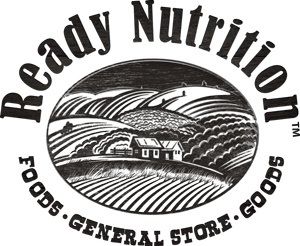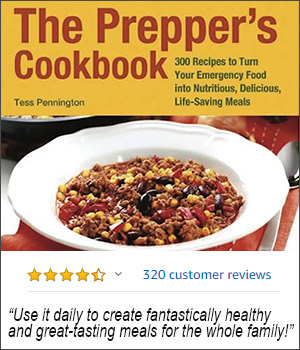By Brian Meyer
Packing a solid Bug Out Bag (BOB) is an important task, you want to make sure you have everything you need while keeping everything within a single bag for easy carrying and escape.
It’s all too common to pack a BOB when you’re at home and not use it until necessary. While you might be able to easily walk around your house or even your neighborhood with your bag fully packed, how many miles will it take for all that weight to slow you down and wear you out?
If you have a Bug Out Bag packed and waiting, it might be time to reevaluate what’s inside it and lighten things up a little while you’re still able to easily. Check out the five tips below to put your Bug Out Bag on a diet without losing any functionality.
1. Use a Tarp Instead of a Tent

Tents are great for camping, but when you’ve bugged out you’re looking more for survivability that total comfort. This is why a tarp is a much better choice for a bug out bag than a tent. A standard tent can weight up to 5 pounds and take up a fair amount of space, two things you don’t want in your BOB.
A tarp on the other hand usually weighs in a pound or two less and can roll up much more tightly than a tent. A tarp is also more versatile, so you can set it up in far more configurations than a tent, which usually only has one. Pair this with a hammock and you’ve got a pretty great emergency sleeping option.
2. Pack Less Water

Depending on the environment you’re surviving in, the amount of actual water you need to pack is probably less than you already have. In most places the issue isn’t finding water, but rather finding potable water that won’t make you sick.
This is why a small, lightweight water filter is such a great option. These can take up the same space as a single bottle of water and filter far more. With one of these you can pack a single unopened bottle of water and the filter, and have nearly infinite water, no matter how the source you’ve chosen looks. Add to this a roll-up water bladder and you have a much larger capacity with nearly no weight gain.
Remember, water weighs about 8 pounds per gallon, so it’s easy to cut a lot of weight out by eliminating all but one bottle.
3. Lighten Your Food

When in survival mode you can’t be too picky about the food you eat. Sure, if you’re bugging in you need to make sure the food you’re storing is good and palatable, but for a Bug Out Bag you just need to look at calories and basic nutrition to keep going for a few days.
You want to pay attention to calories versus weight to get the ideal bug out foods in your bag. Freeze dried food and protein bars are a great option here as well as a mix of raisons and peanuts, but these are more perishable and should be kept track of to avoid spoilage.
Remember, you only need enough food to survive, not to feel full all the time. In an emergency situation you’re looking for survival, not complete comfort. Measure out food based on caloric intake and ration as such. You’ll find you need far less food and lighter food than you thought.
4. Rethink Your Clothing Choices
Unless you’re building a Get Home Bag, you probably can cut way down on the clothing and footwear in your BOB. Sure, it’s great to be prepared and pack an extra set of boots in your bag, but do you really need them? Why not keep a good pair NEXT to your bag so you put them on as you grab the bag? This way you save weight and space in your bag while making sure you have proper footwear from the start.
The same goes for pants and shirt, too. You probably don’t need to pack a full change of clothes in your Bug Out Bag and instead hit the necessary points. Make sure you have a change of socks, a pair of gloves, and some form of jacket/hat if it gets chilly or rainy where you’re planning on bugging out. Anything more and you’re just adding weight.
5. Weigh The Bag Itself

Take a minute and think about the bag you’re using itself. Most people just go for a bag that will hold everything they need but often forget about how much the bag weighs. Take everything out of your bag and see how heavy it is. If you didn’t pay attention to weight when purchasing it chances are that it’s the heaviest part of your BOB.
Look for bags that weight less and have the same storage capacity and you’ll be surprised how much weight you can save. Think of the weight of any containers inside your bag too, as these can often be eliminated for even more bag weight savings.
Brian Meyer is a technology nut who loves craft beer. Still a Boy Scout at heart, he believes in always being prepared. Brian believes the most important tools you can have when the SHTF are your brain and the ability to keep a level head, no matter what the situation is.
This article was originally published at Ready Nutrition™ on January 6th, 2015








Good article.
In respect of
4. Rethink Your Clothing Choices
I would suggest that
a) You get into the habit of usually wearing boots, adjusting the type for the weather, although a good 3-season boot is a good ‘cover all bases’ for many of us
b) Include a change of underwear, I personally find that not changing my undies every day eventually results in irritation in the area between my groin and my legs. For this reason I also carry a tube of Clotrimazole cream in my IFAK
c) Consider if you need waterproofs